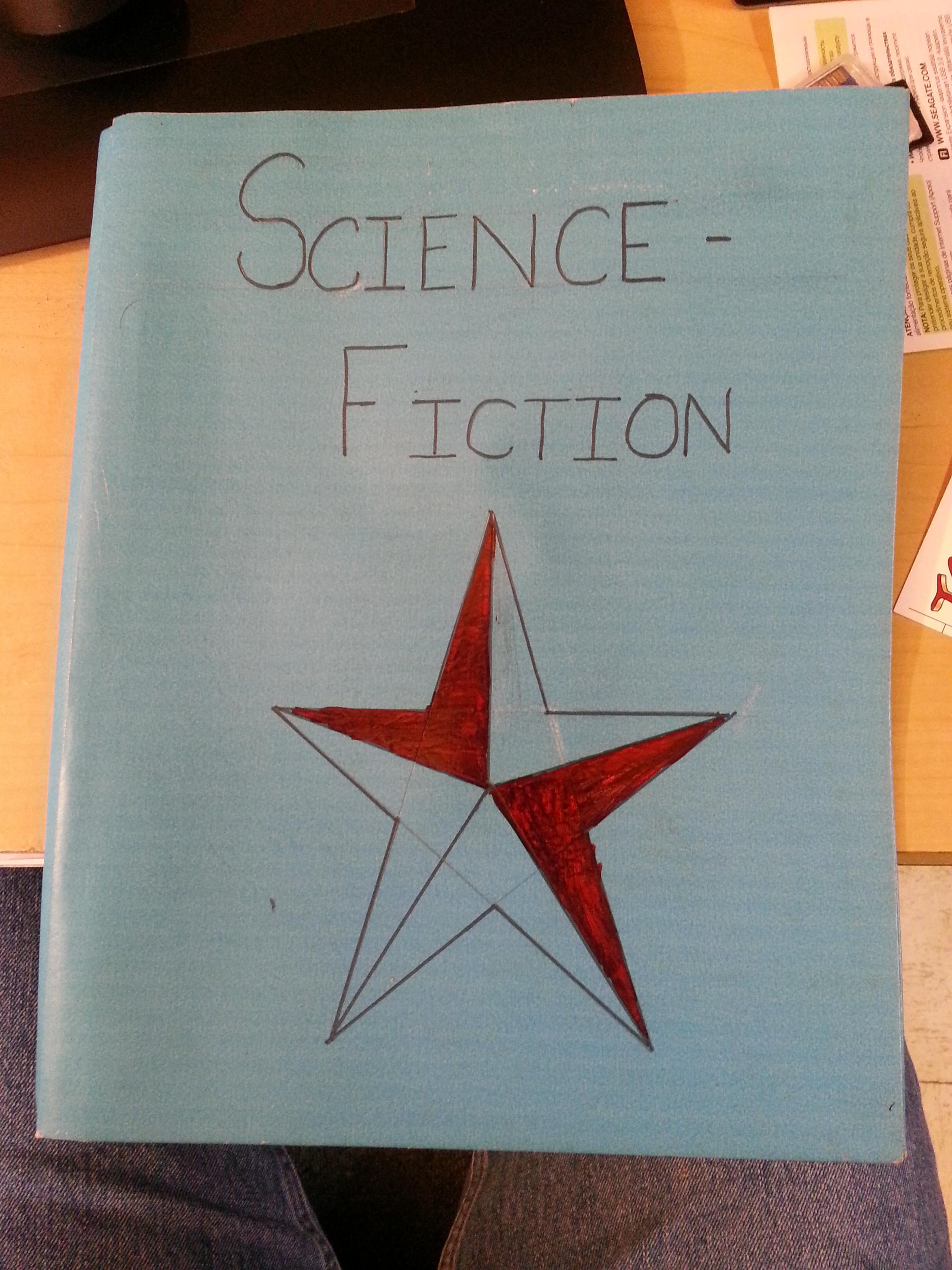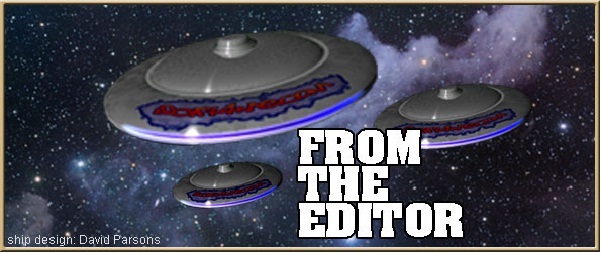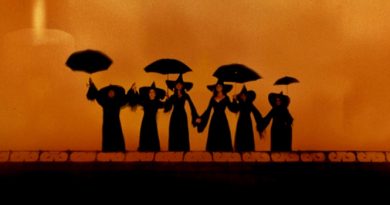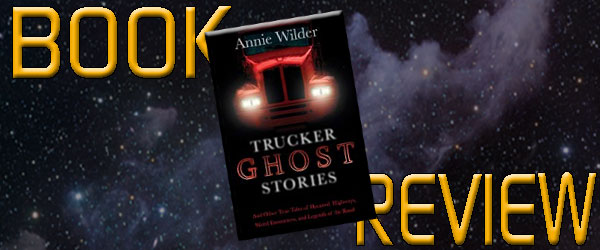My First Science Fiction Report
Here at World Headquarters, I’ve been digging out of quite a few boxes full of the detritus of the past fifteen or so years — collected papers, bank statements, old utility bills, etc.
And I ran across this:

It’s a report dated May, 1983 — seventh grade. Reading with Mrs. Kathy Lindley at David Crockett Junior High School. Reading through it, I see a tremendous number of flaws, but in the interest of comparing where I am with where I’ve been, I thought I’d share it with you — flaws and all — to show you that this is an acquired talent. And it’s also one that anyone can pick up, with the right teachers, the drive, and the determination to stick through it.
So, presented without revisions: Science Fiction
>>>>>
Hunt, Jason
Reading 7 (3)
May, 1983
Science fiction is a popular kind of literature. The basic themes include time and space travel, and marvelous inventions. Most SF stories take place in the future, but some take place in the present or past. Some might be set in another place. Others might put the reader in another time, place, or dimension.
Magazines have played an important role in Sci-Fi development. In 1937, John W. Campbell, Jr. became editor of the magazine called Astounding Science-Fiction. Campbell developed a group of writers who dominated the field of S-F in the mid-1900’s. These writers included Isaac Asimov, Lester Del Rey (who founded Del Rey Publications), Robert A. Heinlein, and Paul Anderson.
Hardback SF novels were first published in 1950 and increased steadily in number. Beginning in the 1960’s, a huge increase in paperbacks also took place. Some serious Sci-Fi creations appeared on television. One of the best known programs known was Star Trek, created by Gene Roddenberry; starring William Shatner, Leonard Nimoy, and DeForest Kelley. Star Trek obtained its greatest popularity when shown in reruns in the 1970’s. The show was originally shown from 1966 to 1969.
“Science fiction has become a major literary form and a popular subject for filmmakers,” the 1980 World Book Year Book states. It’s true. Sci-Fi hit the big time in 1902. A Trip to the Moon was one of the earliest S-F films. In 1950, Destination, Moon was released. The idea of moon explorers was considered when the movie was shown.
In 1968, one of the best S-F films ever made was released. Arthur C. Clarke’s 2001: A Space Odyssey made Science-Fiction history.
In 1898, H.G. Wells had written War of the Worlds, which was later made into a television classic.
In 1977, George Lucas wrote and directed Star Wars, which is still famous although its two sequels are better. The Empire Strikes Back, released in 1980, out-did Star Wars with 413 different special visual effects. In the asteroid scene, Han Solo’s ship, the Millennium Falcon, is being chased by Imperial TIE fighters. To do this, George Lucas obtained a $500,000 camera with four lenses. One lens was photographing the Falcon, another took the star field, another took the asteroids, and the other shot the ships and shadows.
Return of the Jedi will be released May 25, 1983. Jedi is the last of the first trilogy, but is the sixth episode in the Star Wars saga.
In 1979, the movie Star Trek – The Motion Picture was released after the television series was cancelled in 1969. Star Trek 2 – The Wrath of Khan was released in 1982. This film was inspired by the Star Trek episode “Space Seed”, which introduced Ricardo Montalbán as Khan, a product of 20th century genetic engineering.
Science-Fiction books sometimes inspire movies, or vice-versa. 20,000 Leagues Under the Sea and War of the Worlds were books made into movies. Star Trek II was made into a book based on the film.
Robots have been favorites among Science-Fiction. For instance, Artoo-Deetoo, See-Threepio, and other electronic creatures were shown in the Star Wars saga. T.W.K.E. 4, or “Twiki”, appeared in Buck Rogers. Robbie the Robot was shown in The Forbidden Planet (1956), the Robot in Lost in Space, and Cylons in Battlestar Galactica.
Advanced weaponry has been a favorite, also. Lasers, swords of light, blasters, and other high technology are always appearing there in movies sometime. Light-sabers in Star Wars, which were created by a specially coated flexible piece of thin sticks. The laser effect was added later.
Star Trek II had lasers blowing things away, Buck Rogers and Galactica also had laser cannons and hand-guns. All of these were created by special effects engineers working for the film crew.
Jules Verne once stated, “Then let us predict the helicopter, and take for our motto that of Nadar: All that is possible will come to pass.”
BIBLIOGRAPHY:
Asimov, Isaac – Science Fiction, World Book Encyclopedia, S-Sn, 1979 edition
Asimov, Isaac – Call it SF or Sci-Fi, It’s Big! World Book Year Book, 1980 edition
Something About the Author, Vol. 1, 13, & 21
Starlog Magazine, Vol. 56
Time Magazine, Vol. 115, pg. 66-70+ May 19, 1980 “The Empire Strikes Back!”
>>>>>
I got a 95 out of 100 on that report, and reading it while typing it here, I wince at a lot of it. And yes, I completely left out The Outer Limits and The Twilight Zone, which were not in my wheelhouse at the time.
So, there you have it. One of my first attempts at “covering” the genre. I think my skills have improved just a little bit. Maybe. You’ll have to read more to let me know.
~JPH




